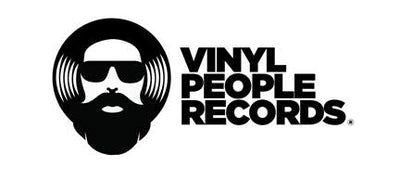Styx CAUGHT IN THE AC(LP) - Vinyl

Styx was one of the titans of the hugely popular AOR movement -- along with Boston, Foreigner, Journey, and REO Speedwagon -- embraced by the U.S. mainstream in the late '70s and early '80s. The end of the Chicago-based band's peak period coincided with one of the most ambitious and notorious projects of the time, the 1983 concept album Kilroy Was Here. Styx's tour to promote the album was a highly theatrical production based on the story line, which was conceived by vocalist/keyboardist Dennis DeYoung. The Kilroy Was Here tour was preserved for 1984's Caught in the Act: Live home video and double-live album (with identical cover art but different track listings and running orders).
To make sense of it all, it's important to first understand Kilroy Was Here. The story concerns a futuristic, ultra-conservative, right-wing society that has outlawed rock & roll and enforces censorship. DeYoung plays a rock star named Robert Orin Charles Kilroy (note the acronym) who is framed for a murder during one of his concerts. The crime was actually planned by the malevolent Dr. Everett Righteous, the founder and leader of the Majority for Musical Morality (MMM), who is played by vocalist/guitarist James Young. Bass guitarist Chuck Panozzo plays Lt. Vanish, and drummer John Panozzo plays Col. Hyde; they are Righteous' henchmen. Kilroy is wrongly convicted and sent to a prison ship. This prison features Robotos -- robots mass-produced in Japan that take over many jobs performed by humans (a subplot that would also become relevant in real life). Vocalist/guitarist Tommy Shaw plays Jonathan Chance, the leader of an underground movement determined to bring back rock & roll and clear Kilroy's name. He manages to cut into an MMM mind-control television broadcast and play footage of a Kilroy concert. Chance's actions inspire Kilroy to overpower a Roboto guard, disguise himself as one, and escape. He leaves graffiti around the city as a message to Chance, and they meet up at the Paradise Theater (the title of Styx's chart-topping 1981 album), which is now the Museum of Rock Pathology that Righteous created using robots to re-enact Kilroy's last concert. Much of the rest unfolds as a normal concert CD with Styx cranking out hits and fan favorites like "Blue Collar Man (Long Nights)," "Snowblind" (with Young mentioning censorship legislation efforts by the government in his intro), "Too Much Time on My Hands," and "Come Sail Away." A few Kilroy Was Here songs like "Don't Let It End."
Styx always suffered the slings and arrows of critics, but the band really took a beating for the Kilroy Was Here album and tour. This fact, along with long-gestating internal tensions, resulted in Styx splitting up for several years while the members pursued solo projects. So, what about the big picture here? Perhaps the idea of music censorship seems silly, and looking back Kilroy Was Here and Caught in the Act: Live might appear heavy-handed and overwrought to some people almost 25 years after their release, but cultural and religious conservatives had truly stirred up the U.S. population at the time. They claimed that many rock artists' music and lyrics, including that of Styx, was a bad influence, and some of it was downright evil due to subliminal, backward satanic messages deliberately hidden in the music itself. (This alleged recording practice is also known as "backmasking.") But within two years this hysteria resulted in the formation of the Parents Music Resource Center by several Washington wives (who, to paraphrase a Styx classic, obviously had too much time on their hands), U.S. Senate hearings, and the bullying of the recording industry to "voluntarily" label albums with a "Parental Advisory: Explicit Lyrics" sticker if it was decided they included potentially offensive content. Quite simply, at the time of Kilroy Was Here and Caught in the Act: Live, the censorship issue was serious business, and Styx was fighting it head on. Rock & roll will always be under fire from certain segments of society, but the degree changes depending on the times and the political and cultural forces in power. Therefore, the topic of music censorship is both dated and timely, although by 2007 rap was in critics' crosshairs more than rock & roll. [Caught in the Act: Live is certainly the definitive Styx home video release. The only real drawback is the lack of liner notes, but the DVD, with the concert and music videos, captures Styx at its creative and commercial prime between 1977 and 1984.] ~ Bret Adams
- Format: Vinyl
- Genre: Pop
Where Music Lives ON






